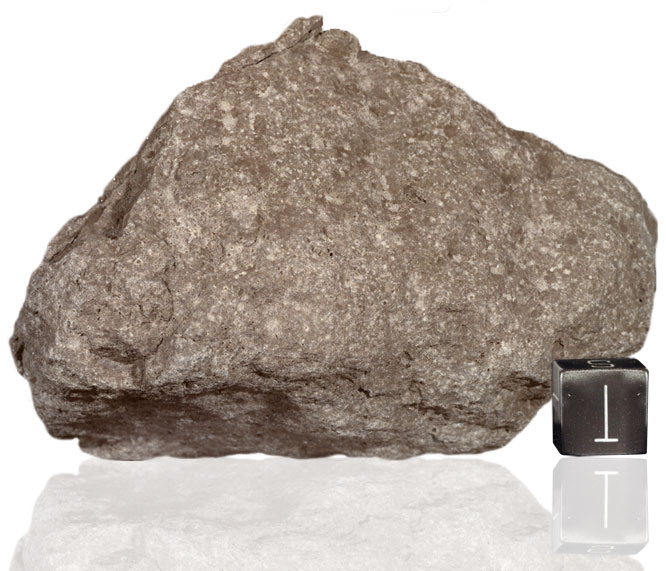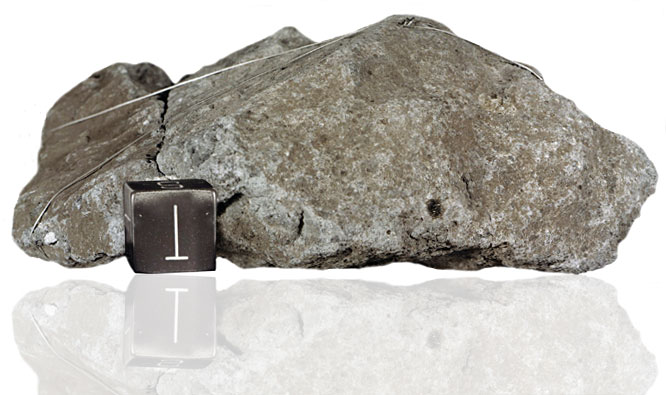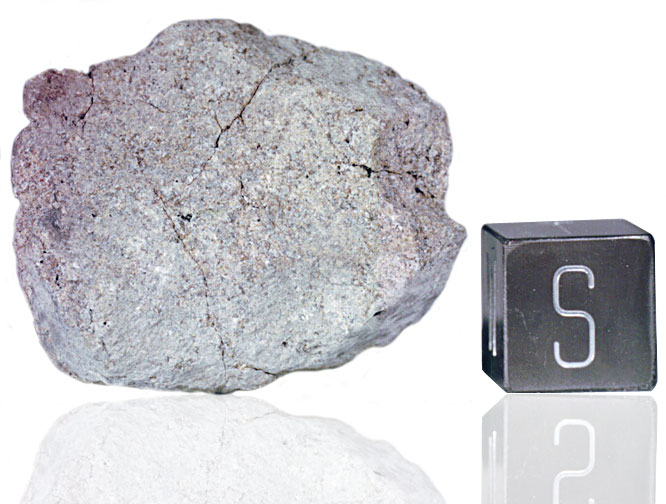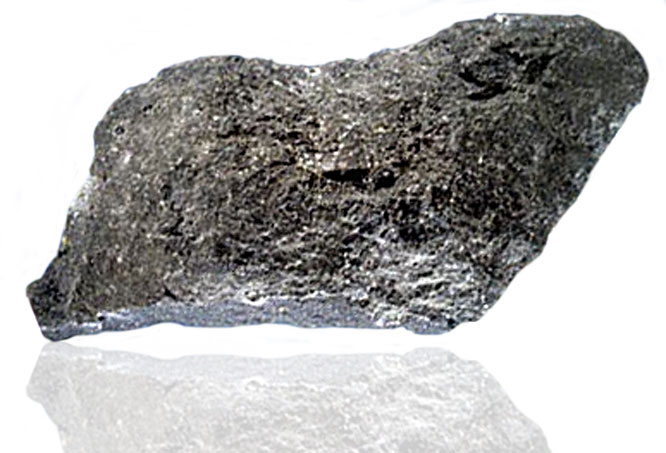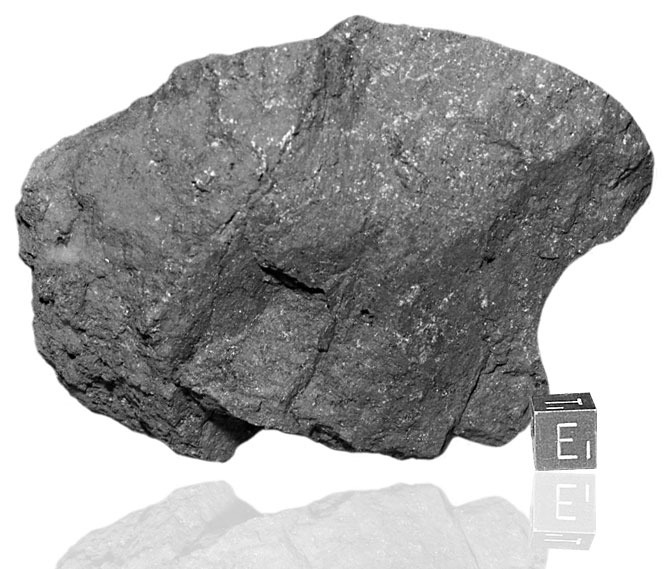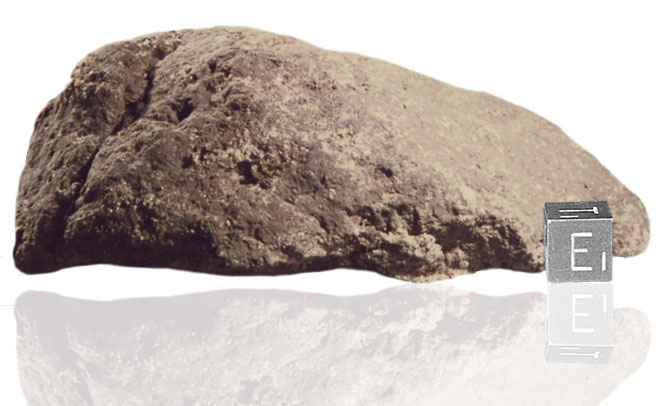
Fact sheet
Sample 12005 is a lunar Mare basalt collected during the Apollo 12 mission to the Moon. The sample contains the highest magnesium content of all lunar basalts and is similar to primitive picritic basalts on Earth. Although the age of this sample has not been determined, most Mare basalts are between 3 and 3.5 billion years old. The top surface of the hand specimen sample is covered in micrometeorite craters, otherwise known as zap pits.
The thin section of this sample exhibits a cumulate texture, formed when dense crystals settle within a partially crystallised magma. Cumulate textures are also observed in some basalt and gabbro rocks on Earth. The rock contains abundant olivine and pyroxene (augite and pigeonite) phenocrysts and interstitial plagioclase feldspar. Minor amounts of ilmenite and chrome spinel are also present.

